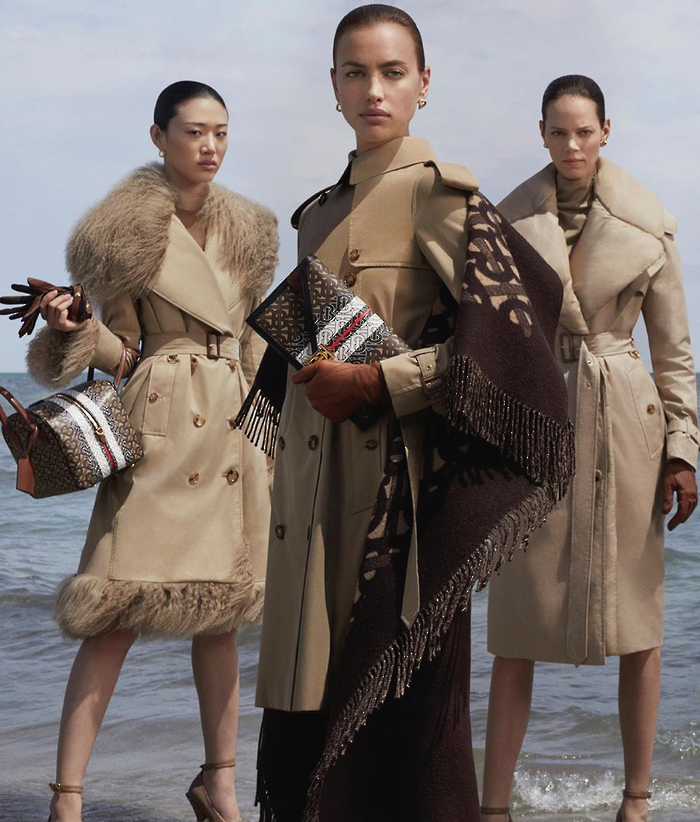The Fall of the Supermodel
Fashion Editor Caterina Bragoli takes a look at why the intangible world of the supermodel has come crashing down
I’ve spent a great deal of time sifting through decades-old photography archives, looking to the likes of Kate Moss, Naomi Campbell and Christy Turlington for fashion inspiration. Or so I thought. Of course, the tiny silk slip dresses are impossibly alluring, as are the light wash baggy jeans and the halter neck tops. These garments embody the grunge-yet-girly fashion decade that was the ’90s.
But, you can find images of clothing anywhere. Old runway photos, campaigns and red carpets are prime locations for some quality fashion exhibitions. There’s a consensus amongst these photos: they all tend to feature supermodels. Why wouldn’t they? They have the most celebrated bodies, strikingly beautiful faces and the ability to carry off any kind of clothing. As they saunter down the runway in £2,000 shoes, their intangibility can be felt by every eager-eyed onlooker.
“I felt like I could identify with someone who, while being impossibly beautiful, wasn’t afraid to throw societal constraints out of the window.”
Kate Moss was always the supermodel I placed on a pedestal. Above any filmstar or musician was, for me, the cheeky, reckless girl from Croydon. She symbolised a kind of anti-model movement: she was shorter than the rest, and she seemed to not care about what a single person thought of her. There was no pretence: she was flawed, she was restless, and she threw the polished images of models like Cindy Crawford and Elle Macpherson to the side with her heroin chic look. It’s the classic cliché – she was the perfect idol for me because she wasn’t perfect. I felt like I could identify with someone who, while being impossibly beautiful, wasn’t afraid to throw societal constraints out of the window.
It was as I delved further into the history of Kate Moss that I realised there were some underlying problems with my fashion idol. Sure, she broke away from the bombardment of ‘perfection’ that was incessantly promoted by other models of her era, however her involvement in the ‘wafer thin’ model movement is worrying. Kate famously claimed: “nothing tastes as good as skinny feels”, and this can be taken as a gateway into the exalting of a single body type as being aesthetically superior to the rest. It isn’t to say that those of a leaner frame are to be shamed, because that is certainly not the case. The problem that arose was that other body types were shunned in favour of this sole ideal.
“I wanted to see clothing through the lens of real-life, as does the rest of the fashion world.”
I then questioned my idolising of not just Kate Moss, but of all supermodels in general. As I flocked to them for fashion inspiration, I realised I wasn’t just looking at the clothes, but at the women wearing them. I was perpetuating an insecurity; I knew that I would never be of that body type, nor would I exude their fascinating, untouchable quality. Upon this realisation, I shunned looking to Kate anymore. I wanted to see clothing through the lens of real-life, as does the rest of the fashion world.
Change is ushering its way in, slowly. Fewer supermodels are gracing the covers of Vogue, Elle, and Harper’s Bazaar, and are being substituted for actors and actresses, activists and icons. The supermodels of our generation – the likes of Gigi Hadid, Kendall Jenner and Kaia Gerber – are failing to make an impact to match that of their predecessors. They may regularly feature on Vogue’s weekly best-dressed, as well as most influential runway shows, but that’s as far as their reach goes. People no longer want to see the same body type lauded above the rest. We now look for talent, diversity and activism. It’s a climate of innovation and development, and supermodels just don’t make the cut.
“While Kate Moss may have once felt like someone I could identify with, her place has been taken by ten alternatives that feel within my reach.”
This could be the reason why the power of the social media influencer has risen so significantly; with more and more young adults having the same epiphany as me, we look to identify with someone that represents us. The list of those growing their social media platform is endless (with supermodels of course hopping on the bandwagon too), leaving us with a myriad of choice as to who we follow. We can curate our online content to feature the people that we want to see, now that we are given options. While Kate Moss may have once felt like someone I could identify with, her place has been taken by ten alternatives that feel within my reach.
High fashion and supermodels always seemed so intrinsically bound together, as if one couldn’t exist without the other. Christian Dior’s famously unrealistic waistlines – and the women who managed to fit into them – were all the rage decades ago, and it seems like yesterday that Kate Moss and Pete Doherty were taking the streets of London by storm. But, with this year’s Vogue covers featuring the likes of Jane Fonda, Zendaya and Billie Eilish, it’s clear our priorities are shifting for the better.
 Comment / Cambridge’s tourism risks commodifying students18 April 2025
Comment / Cambridge’s tourism risks commodifying students18 April 2025 News / Cambridge student numbers fall amid nationwide decline14 April 2025
News / Cambridge student numbers fall amid nationwide decline14 April 2025 News / Greenwich House occupiers miss deadline to respond to University legal action15 April 2025
News / Greenwich House occupiers miss deadline to respond to University legal action15 April 2025 Comment / The Cambridge workload prioritises quantity over quality 16 April 2025
Comment / The Cambridge workload prioritises quantity over quality 16 April 2025 News / Varsity ChatGPT survey17 April 2025
News / Varsity ChatGPT survey17 April 2025





